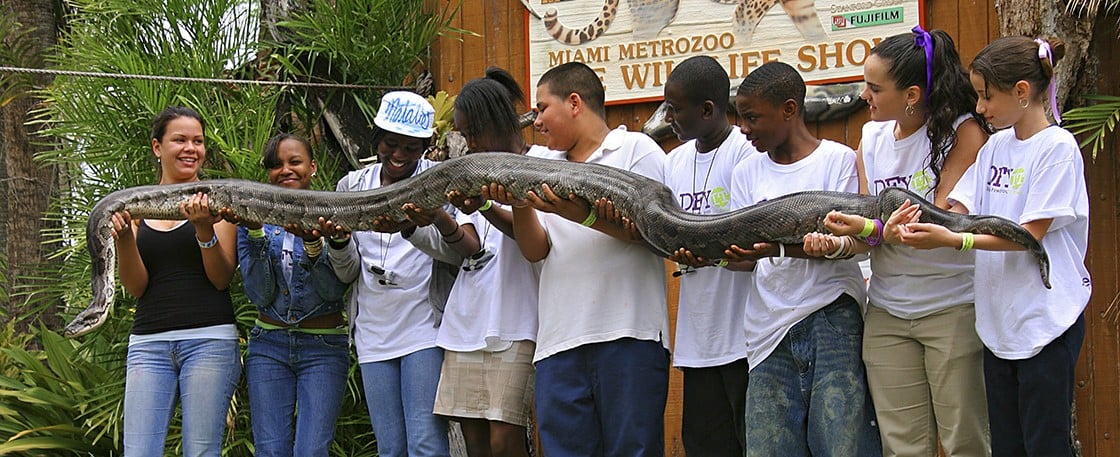Check out our post about the most effective ways to use our Video Read-Alouds.

The Snake That's Eating Florida
Students will read a nonfiction story about invasive species in the Florida Everglades. The story will build knowledge and domain-specific vocabulary, and have a special emphasis on cause and effect.
Learning Objective: Students will read a nonfiction story about invasive species in the Florida Everglades. The story will build knowledge and domain-specific vocabulary, and have a special emphasis on cause and effect.
Standards
A teacher in New York shares her easy-to-follow 5-day nonfiction reading plan. (It's designed for 4th graders, but you can easily level it down a bit.
Check out the Python Challenge website we discussed in the article. You can see how many pythons have been caught to date!
Our colleagues at Action magazine created this great video about other invasive species. Find it here.
More About the Article
Content-Area Connections
Social studies: geography
Science: animals, environment
Key Skills
cause and effect, vocabulary, close reading, key details, text features, text evidence, drawing conclusions, explanatory writing
1. PREPARING TO READ
Watch a Video/Preview Text Features (25 minutes)
- This story is accompanied by a brand-new Video Read-Aloud, in which author Lauren Tarshis narrates the article as authentic photos and footage help students visualize what’s happening. Consider showing the video as a “first read.”
- Have students open their magazines to pages 4-5 and look at the headline, subhead, and labels (“Big Read,” “Nonfiction feature”). Ask: What do the labels tell you? How does the subhead help explain what the headline means?
- Point out the Pause and Think boxes starting on page 6, which are designed to check basic comprehension. Explain that these questions will help the students better understand the story. (Students will delve into higher-level questions with the close-reading questions, available in this guide and online.)
- Direct students to the photo on page 6. Discuss the kinds of animals pythons will eat. Use this opportunity to point out that humans are not pythons’ natural prey.
- Ask students to look at the map and photo on page 8. Using the information in the caption, discuss where Everglades National Park is, its size and the species it contains, and what it looks like.
2. CLOSE READING
Reading and Unpacking the Text
- First read: Read the story as a class. At the end of each section, use the Pause and Think questions to quickly check comprehension.
- Second read: Distribute some or all of the close-reading questions and preview them together. After the class answers the questions, discuss the answers together. Then discuss the critical-thinking question.
Close-Reading Questions (30 minutes)
- Read the section “Out of Place.” How are the pythons’ jaws able to help them eat? (key detail) Their jaws allow them to open their mouths wide and eat animals that are much larger than the snakes themselves are.
- According to the section “Set Free,” what happened when pythons grew too big for their owners to care for them? (cause and effect) People no longer wanted the pythons, so they let them loose.
- Read the section “Snake Invaders.” What is an invasive species? Why are they a problem? (cause and effect) An invasive species is an animal or a plant that damages the animals and plants living in a new environment where it’s introduced. They’re a problem because they can make those native species disappear forever.
- According to the section “A Long Struggle,” what is one reason it’s hard to know how many pythons are living in the Everglades? (key details) Their coloring makes them blend in with the wetlands. This makes it impossible to count them.
- What can you infer about the problem in the Everglades from the photo on page 9? (inference) One reason there are so many pythons in the Everglades is that a female Burmese python can lay as many as 100 eggs at once.
Critical-Thinking Question (10 minutes)
- What lessons can you learn about having animals like pythons as pets? (cause and effect) Answers may include that it’s not wise to have a pet that can grow as large as a python can grow, because you may not be able to care for it.
3. SKILL BUILDING
